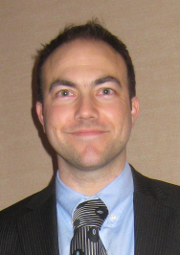| Version 30 (modified by , 10 years ago) (diff) |
|---|
-
GEC 19 Evening Demo Session
- Location
- Schedule
- Session Leaders
- Details
- Directions and Logistics
-
Projects
- GENI Infrastructure and Measurement Projects
- Security and Data Exchange Projects
-
Experiments and Education
- Course Modules for Teaching Networking Concepts
- Simulation-as-a-Service App
- SDN-Video-Orchestrator
- Jacks
- IDMS
- ProtoRINA over GENI
- NETMAP
- Dell SDP and ExoGENI
- Server Redundancy with OpenFlow
- Real Time Video Streaming Using OpenFlow
- Virtual Topology Service (VTS)
- Simulation, Detection, and Denial of ping Attack
- Tapestry in GENI
- Protocol Pattern Matching on LINC Switch
- Network Characterization of Hadoop using GENI
- MOXI Slice
- GIMI
- Embedding Location-Based Network information within IPv6 Address
- GEE
- OpenFlow controllers for inter-domain networks
- Wireless Projects
- Federation / International Projects
GEC 19 Evening Demo Session
Location
Georgia Tech Technology Square Research Building, 85 Fifth Street NW
Schedule
TBA
Session Leaders
 |
 |
 |
| Heidi Picher Dempsey GENI Project Office |
Manu Gosain GENI Project Office |
Peter Stickney GENI Project Office |
Details
The evening demo session gives new and existing GENI experimenters and projects a chance to share their work in a live network environment. Demonstrations run for the entire length of the session, with teams on hand to answer questions and collaborate. This page lists scheduled demonstrations categorized in broad interest groups.
Directions and Logistics
Please visit Directions and Logistics for attendee and presenter logistics information.
Projects
GENI Infrastructure and Measurement Projects
The GENI Desktop
This demo will highlight several new features that have been recently added to the GENI Desktop, and will also demonstrate interoperability with other GENI Tools.
Participants:
- Jim Griffioen, griff@netlab.uky.edu, Univ. of Kentucky
- Zongming Fei, fei@netlab.uky.edu, Univ. of Kentucky
Monitoring Prototype
Demonstration of GENI aggregate-based reporting and alerting system prototype. System is designed to collect data from shared sources provided by aggregators.
Participants:
- V. Cody Bumgardner, cody@uky.edu, Univ. of Kentucky
Internet2 OpenFlow
Internet2 will demo virtualization on the Advanced Layer 2 Service with Flowspace Firewall, showing a guest controller in addition to the standard Advanced Layer 2 Service OESS controller. We will talk about how we plan to allow experimental OpenFlow controllers, including GENI controllers, running alongside our production controller.
Participants:
- Matt Zekauskas, matt@internet2.edu, Internet2
Virtualized Services via OpenFlow Based end-to-end Networking
This system demonstrates a novel methodology for providing arbitrary virtualized services via Software Defined Networking (SDN). The tabletop demonstration provides virtual channels for services from the service provider all the way through to the user passed the user networking hardware. The system utilizes OpenFlow to control the network which enables priority based packet forwarding for required services. As an example, the updated emergency communication system implemented as the priority service will be demonstrated. Since the last demonstration, this demo has been updated on several levels. The additional services were implemented, thick clients replaced by thin clients, improved GUI made.
Participants:
- Milos Manic, misko@uidaho.edu, Univ. of Idaho
- Dumidu Wijayasekara, dumidu.wijayasekara@gmail.com
ExoGENI
Latest ExoGENI features demo. Multipoint topology embedding, multi-aggregate stitching, storage provisioning and more.
Participants:
- Ilya Baldin, Ilia Baldine, RENCI
Software Defined Precise Measurement in GENI
We will demonstrate SoNIC, which enables real-time access to 10Gbps Ethernet physical layer in software. By implementing the creation of the bitstream in software and the transmission of the bitstream in hardware, SoNIC provides complete control over the entire network stack in realtime. SoNIC utilizes commodity-off-the-shelf multi-core processors to implement part of the physical layer in software, and employs a FPGA board to transmit optical signal over the wire. As an example of SoNIC's fine-granularity control, it can perform precise network measurements at the pico-second scale, accurately characterizing network components such as routers, switches, and network interface cards. We will demonstrate the capability of SoNIC to performance long distance network measurement over GENI between sites at NY and CA.
Participants:
- Han Wang, Han Wang, Cornell Univ
Security and Data Exchange Projects
Experiments and Education
Course Modules for Teaching Networking Concepts
We will demonstrate the education modules we have developed for educators to use in their undergraduate Computer Networking classes. These consist of concept demonstration modules as well as student assignment modules. Each module is comprised of a short overview video, longer tutorial videos, written tutorials, and canned demonstrations. The concept modules also include presentation slides while the assignment modules include completed assignments as samples for the instructor.
Participants:
- Jay Aikat, aikat@cs.unc.edu, Univ. of North Carolina
Simulation-as-a-Service App
We will demonstrate a simple simulation-as-a-service (SMaaS) App that is setup within a hybrid cloud leveraging InstaGENI Rack resources. The SMaaS App use case involves TotalSim using GENI for PaaS experiments, which will enable them to deliver their App (that has data-intensive computation and data movement workflows) in SaaS form to their customers.
Participants:
- Prasad Calyam, calyamp@missouri.edu, University of Missouri
SDN-Video-Orchestrator
We will demonstrate Software-defined networking (SDN) controller orchestrated traffic engineering for video traffic. We will present an OpenFlow-enabled SDN architecture that works in tandem with MPEG-DASH to allow video clients to stream videos seamlessly. This work is an extension to our project titled “SDN based application for efficient video streaming”, which was the recipient of the Internet2 2013 Innovative Application Award.
Partcipants:
- Aditi Ghag, aditivghag@gmail.com, Georgia Tech
Jacks
We will be demonstrating the first prototype of Jacks, the successor to Flack.
Participants:
- Rob Ricci, ricci@cs.utah.edu, Univ of Utah
IDMS
The Intelligent Data Movement System (IDMS) project will demonstrate data dissemination across multiple GENI aggregates. IDMS will use a combination of services running as appliance images on GENI nodes that are responsible for the storage and efficient movement of data between sites.
Participants:
- Ezra Kissel, kissel@cis.udel.edu, Univ. of Delaware
ProtoRINA over GENI
We will demonstrate ProtoRINA, Boston University's prototype of the Recursive InterNetwork Architecture (RINA, http://csr.bu.edu/rina). The demo presents several fundamental RINA experiments (e.g., dynamic service layer instantiation) over GENI resources, and demonstrates the flexibility of RINA to manage a network by configuring different routing policies.
Participants:
- Ibrahim Matta, matta@bu.edu, Boston University
NETMAP
xDPd is an open source software modular switch implementation. We integrated fast packet process framework called as NETMAP into xDPd to increase the forwarding performance. We will present performance results and possible applications of such a platform on GENI experimentation environment.
Participants:
- Levent Dane, ldane@uh.edu, Univ. of Houston
- Deniz Gurkan, dgurkan@central.uh.edu, Univ. of Houston
Dell SDP and ExoGENI
Brief demo description Integration of Dell SDP on ExoGENI rack with a hard reset mechanism design elements and ORCA integration framework will be presented.
Participants:
- Levent Dane, ldane@uh.edu, Univ. of Houston
- Deniz Gurkan, dgurkan@central.uh.edu, Univ. of Houston
Server Redundancy with OpenFlow
Demonstration of Real time server redundancy for interactive applications using OpenFlow.
Participants:
- Aditya Prakash, aprakash6@wisc.edu, University of Wisconsin-Madison
Real Time Video Streaming Using OpenFlow
Participants:
- Aditya Prakash, aprakash6@wisc.edu, University of Wisconsin-Madison
Virtual Topology Service (VTS)
The Virtual Topology Service (VTS) will allow experimenters to reserve complex and flexible programmable virtual topologies on top of GENI substrates. Virtual switches supporting various SDN technologies (multiple versions of OpenFlow, etc), and simple traditional switches, will be available, and VTS tools will make it easy to reserve an entire topology from a single descriptive rspec. We will demonstrate the current state of the service, and expect a prototype to be ready for brave early adopters to try out soon after GEC.
Participants:
- Nick Bastin, nick.bastin@gmail.com
Simulation, Detection, and Denial of ping Attack
Simulation, Detection, and Denial of ping attack: The demo topology in GENI consist of 2 nodes say Host1 and Host2. Host1 will send the ping's to the Host2. Host2 will continuously measure the number of ping's received from the Host1 and detect the ping attack. The detection will trigger re-programming of the network to deny pinging connection.
Participants:
- Satyajeet M. Padmanabhi, smpadmanabhi@gmail.com
- Deniz Gurkan, dgurkan@central.uh.edu, Univ. of Houston
Tapestry in GENI
In this demonstration we will explain how Tapestry, a software defined application (Developed by Infoblox/flowforwarding.org) will help in continuous monitoring of the network and gives us the Network Complexity Index. Tapestry will be installed and running on a SDN switch which fully monitors the entire network and extracting the complexity index based on the DNS requests made on the network.
Our aim is to run this Tapestry on the GENI cloud platform and identify the complexity based on the DNS requests made on the network and also focus on how rapidly the network complexity is growing and is needed to better management and control.
Participants:
- Rohit Patil Bagli, Univ. of Houston
- Deniz Gurkan, dgurkan@central.uh.edu, Univ. of Houston
Protocol Pattern Matching on LINC Switch
To optimize a protocol pattern matching mechanism on the LINC switch: inspiration was derived from Protocol Oblivious Forwarding (POF), which can be compatible with any new protocol.
Participants:
- v_chanpol@hotmail.com, Univ. of Houston
- Deniz Gurkan, dgurkan@central.uh.edu, Univ. of Houston
Network Characterization of Hadoop using GENI
Hadoop’s implementation of MapReduce in a multi-rack cluster is dependent upon the top of the rack switches and of the aggregator switches connecting multiple racks. We will demo network characterization and requirements perspective for Hadoop using the GENI testbed.
Participants:
- Abdul Navaz, navaz.enc@gmail.com, Univ. of Houston
- Deniz Gurkan, dgurkan@central.uh.edu, Univ. of Houston
MOXI Slice
We will be demonstrating a GENI slice running between the IU GENI rack, through MOXI, to the ICCN GENI rack in Illinois.
Participants:
- Jeff Ambern, jambern@grnoc.iu.edu, Indiana University
GIMI
We will highlight the latest GIMI features like support for long-running experiments. We will also demonstrate the fist lab assignments we have created as part of our Spiral 4 "Virtual Computer Networks Lab" project.
Participants:
- Mike Zink, zink@cs.umass.edu, University of Massachusetts
Embedding Location-Based Network information within IPv6 Address
We will present Embedding Location-Based Network information within IPv6 Address which is a new addressing scheme that uses POF to offer easier data forwarding on the network by embedding location information inside the host address for an OpenFlow-based SDN.
Participants:
- Bahaa Araji, Bahaa Araji, Univ. of Houston
GEE
The GENI Experiment Engine (GEE) is a framework that makes it easy for many experimenters to get up and going with GENI experiments. Inspired by the Google App Engine, it will enable a user who has never used GENI before to do an interesting sample experiment in under 5 minutes. Furthermore, many communities will be able to leverage this framework to do a customized, useful experiment specific to their use case in under two hours. For example, scientists will be able to perform calculations using GENI, educators will be able to deploy and grade homework assignments, and open source developers from US IGNITE and similar efforts can easily build and deploy their software. While our work is not meant to serve all possible use cases of GENI, it will streamline and service the needs of a large portion of the community by providing them with effective and usable tools that are customized to their needs. In this demo we will show the construction and deployment of an interesting GENI experiment within five minutes on the existing GENI infrastructure.
Participants:
- Rick McGeer, rick@mcgeer.com
OpenFlow controllers for inter-domain networks
In this demo/video, we will show the communication procedures between two different OpenFlow controllers to support cross-domain path provisioning in a multi- domain network.
Participants:
- Lei Liu, leiliu@ucdavis.edu, Univ. of California - Davis
Wireless Projects
GENI MOOC Courseware
This is a demo of a sample module that uses GENI to run an experiment in the framework of a Massive Open Online Course (MOOC) on computer networks.
Participants:
- Fraida Fund, Fraida Fund, NYU Polytechnic
GENI-enabled Vehicular Sensing and Control Networking
We will demonstrate the vehicular sensing and control (VSC) platform prototype in this GEC. The platform is designed to enable researchers and experimenters to evaluate the VSC networking research in real world. Towards better understanding of our platform and related technologies, several applications also expect to make their debut in GEC 19. By doing this, we hope to get feedbacks and comments for further improvement and extension.
Participants:
- Hongwei Zhang, hongwei@wayne.edu, Wayne State Univ.
- Jing Hua, jinghua@wayne.edu, Wayne State Univ.
- Chuan Li, lanfker@gmail.com, Wayne State Univ.
- Yu Chen, yuchen.wayne@gmail.com, Wayne State Univ.
Mobile Video Streaming
Lehigh will show real-time video streaming with mobility support for content-centric networks.
Participants:
- Mooi Choo Chuah, chuah@cse.lehigh.edu, Lehigh Univ.
WiMax Connectivity and Monitoring
WiMax connectivity and monitoring demo at a remote location.
Participants:
- Wisconsin Wireless and NetworkinG Systems (WiNGS) Laboratory
- Derek Meyer, dmeyer@cs.wisc.edu
- Suman Banerjee, suman@cs.wisc.edu
- Thomas Steele, Kemp Natural Resources Station, Univ. of Wisconsin
Content Retrieval in MobilityFirst FIA
Global Unique Identifiers (GUIDs) used in the MobilityFirst Future Internet Architecture can be used to address different classes of Internet objects, from devices to contents, from services to context. In this demo we will showcase how contents can be retrieved through the use of the proof of concept prototype we have implemented working on any Linux/Android device. More information on MobilityFirst FIA project can be found at http://mobilityfirst.winlab.rutgers.edu
Participants:
- Wireless Information Network Laboratory (WINLAB) at Rutgers University
- Franceso Bronzino, bronzino@winlab.rutgers.edu
- Ivan Seskar, Ivan Seskar
- Kiran Nagaraja, nkiran@winlab.rutgers.edu
Clemson Vertical Handover
A GENI testbed for vertical handovers. The Clemson GENI WiFi and !WiMAX networks have been integrated into a vertical handover testbed where experimenters can evaluate novel handover algorithms.
Participants:
- Ryan Izard, Ryan Izard, Clemson Univ.
- Adam Hodges, hodges8@g.clemson.edu, Clemson Univ.
Federation / International Projects
SDX-iGENI: Software Define Network Exchange for International GENI
We will demonstrate the initial prototype for Software Define Network Exchange(SDX) at StarLight which will serve as exchange point for projects of members of the Consortium For International Advanced Networking Research using the "iGENI/Slice Around The World" as a platform for Advanced Network Research and other Science Research.
The "Slice Around the World" demonstration initiative was established to demonstrate the powerful potential of designing and implementing world-wide environments consisting of Global computational and storage clouds closely integrated with highly programmable networks. The initiative has been established by network research centers/research labs that are participating in multiple next generation networking activities, including those developing large scale distributed experimental network research environment, such as those be implemented by such initiatives as the NSF Global Environment for Network Innovations (GENI), the EU Future Internet Research Environment (FIRE), the Japanese New Generation Internet, the Korean Future Internet initiatives, the German Future Internet Lab (G-Lab), the Brazilian future Internet initiative and others. These environments are being developed by researchers for researchers. An important goal for many of the current projects would be to have persistent global environments directly developed and managed by the research community to support their experimental research.
Participants:
- Jim Chen, jim-chen@northwestern.edu, Northwestern Univ.
SDX at Georgia Tech
The Software Defined Internet Exchange (SDX) is being explored as a means to link the GENI research infrastructure with other networks and service providers. This proposed demonstration and poster provides updates on the ongoing SDX work at Georgia Tech and ColoAtl.
Participants:
- Russ Clark, russ.clark@gatech.edu, Georgia Tech
VNODE and FLARE
We updated VNode system to next version and we will be showing our progress of VNode system, especially focusing on applications working over VNode system. We are planning to prepare three kinds of demos, one for video multicasting and transcoding in virtual network, second for FLARE switch, and at last for federation between different virtualization platforms.
Participants:
- Univ. of Tokyo
- Akihiro Nakao, nakao@iii.u-tokyo.ac.jp
- Shu Yamamoto, shu@iii.u-tokyo.ac.jp
- Toshiaki Tarui, toshiaki.tarui.my@hitachi.com, Hitachi
Federation Tools, Authorities, and APIs
In this demo we will demonstrate the further integration of what was discussed at GEC18 (International federation, federation tool session). How can we set up a federation with the Federation APIs, what tools and authorities support this and what are the advantages and experiences.
Participants:
- Brecht Vermeulen, brecht.vermeulen@iminds.be, iMinds
- Rob Ricci, ricci@cs.utah.edu, Univ. of Utah
- Marshall Brinn, mbrinn@bbn.com, GPO
Attachments (7)
- GEC19-NETMAP.pdf (324.1 KB) - added by 10 years ago.
- GEC19-SDP.pdf (465.2 KB) - added by 10 years ago.
- 1908_GEC19Poster.pdf (848.2 KB) - added by 10 years ago.
- 1914_GEC19 Poster_WayneStateU-final.pdf (1.7 MB) - added by 10 years ago.
- 1921_GEC19-poster[1].pdf (27.5 MB) - added by 10 years ago.
- 1934_GEC19-DemoPoster.pptx (559.7 KB) - added by 10 years ago.
- 1957_GEC 19 Poster.pdf (84.6 KB) - added by 10 years ago.
